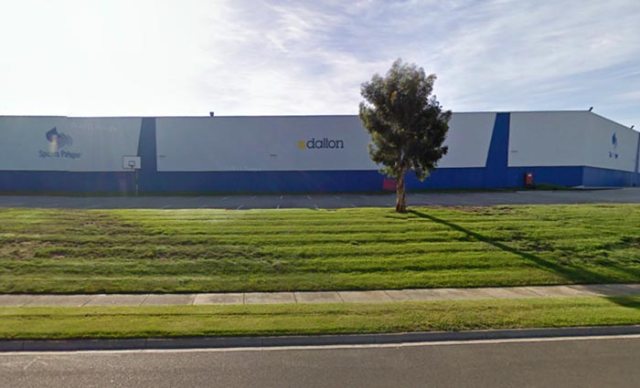
Paperlinx has less than two weeks to sell its second-biggest European business or it may meet the same fate as the UK operation, which collapsed today because of an ‘unrecoverable’ cashflow position.
Speaking exclusively to ProPrint, chief executive Andy Preece says the company had little choice but to stop propping the failing business up and put it into administration, as it had reached a ‘critical and unrecoverable cash position’ with no prospect of improvement.
“We had to draw a line in the sand,” he says. “When you have such an unrecoverable decline in net cash position, you can’t put creditors at further risk.”
All but five of Paperlinx’s 19 UK sites were immediately closed by administrators this morning, and 693 of the business’ 1200 staff were made redundant.
The focus now shifts to operations in Europe, where key financier ING has given Paperlinx until April 15 to sell the loss-making Benelux business before it withdraws funding.
[Related: The ups and downs of Paperlinx]
Preece says the collapse of the UK business is due to multiple factors all working together to bring it down.
First were the falling sales and margins evidenced in the company’s half-year report with sales plummeting 15 per cent to $884m in the half-year, while pre-tax losses shot up 94 per cent to $50.7m, and EBIT losses were 14 per cent worse at $21.35m.
The company said this was because some major mills have started selling directly to it customers at ‘unsustainably low prices’ and competing with merchants for the same business with aggressive price cuts.
Then there was the recent withdrawal of trade credit insurance by one of the industry’s major insurers, resulting in some mills demanding upfront payments – squeezing cashflow to the brink.
Finally, the UK business had a big pension deficit, with the former Robert Horne pension scheme having a deficit of £76.5m, and £6.8m for the former Howard Smith scheme.
Paperlinx says even with ongoing and substantial cash investment the UK business is a lost cause and there is ‘no reasonable basis upon which to expect a financial improvement’.
It says a turnaround is so unlikely that it is not in the company’s best interests to continue to support its trading losses or adverse liquidity, or to fund significant restructuring.
Paperlinx’s operations in Britain and Belgium, Netherlands and Luxembourg (Benelux) are its biggest in Europe and the ones that have been losing the money, with other European business in better shape.
These businesses are the source of Paperlinx’s ongoing loan woes that have stopped it from trading on the ASX until at least April 8, as it breached the terms of a loan to ING, the bank financing the UK and Benelux operations.
ING has now pulled the plug on its funding to the UK and has given Paperlinx until April 15 to find a buyer for Benelux before it pulls out of there too.
[Related: More paper news]
Preece says Paperlinx is in formal talks with multiple potential buyers, but there is no binding proposal on the table and he cannot speculate whether a deal will get done in time, or whether the rest of Europe will be sold.
“The European businesses are interconnected to varying degrees both financially and by customers and supply chains so there are many stakeholders whose actions can influence the course of events,” he says.
“It is a fluid situation and we need to look at any and all offers we are given and assess the market reaction to see what out next moves are.”
Preece says Paperlinx would not get any cash from the sale of any of its businesses, as it would all stay with the sold-off business under the buyer.
Preece acknowledges the havoc the collapse of Britain’s biggest paper merchant will have on the local printing industry, saying it ‘will not go unnoticed’.
“A business failure of this size will of course have a significant effect, and we acknowledge it will have to be assessed by both suppliers and customers,” he says.
Preece points out the Asia Pacific business, Spicers, is unaffected by the European collapse and is in good financial shape with a bright future.
He says the primary focus here will be to ‘continue to develop its businesses beyond paper merchanting and into sign and display and packaging’.
Spicers is keeping its head above water with a six per cent sales drop to $209m in the half-year report offset by margin and cost control in Australia and New Zealand.
Underlying EBIT eased only one per cent to $9.1m and while pre-tax profit was down 85 per cent to $1.35m, this was mostly a result of $7.77m worth of significant items, up from only $412,000 last year including $1m restructuring costs and a $6.3m goodwill writedown.
Comment below to have your say on this story.
If you have a news story or tip-off, get in touch at editorial@sprinter.com.au.
Sign up to the Sprinter newsletter


